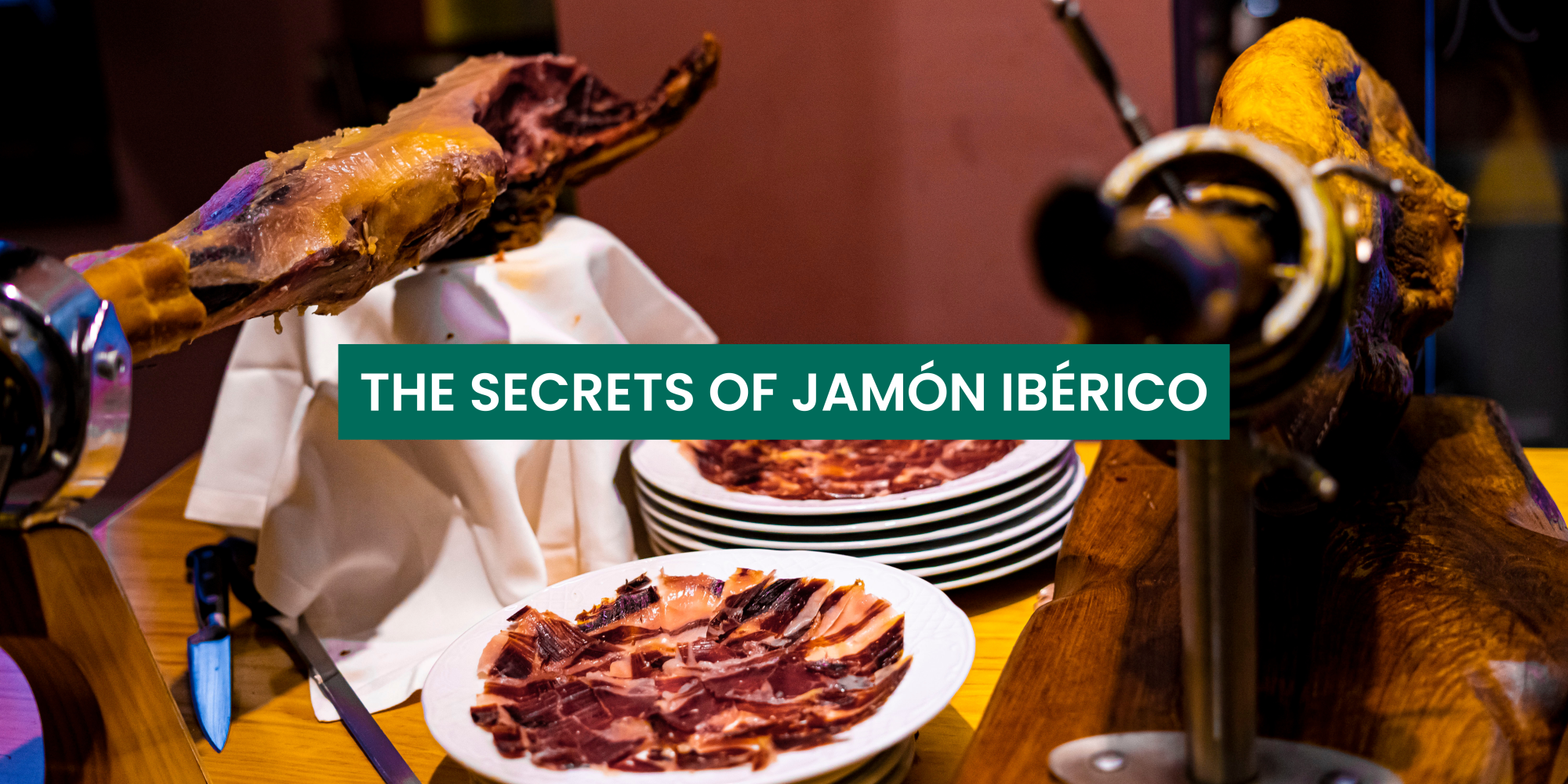THE SECRETS OF JAMÓN IBÉRICO

Spain has a long history and culture that keeps many old traditions alive. This is most noticeable in Spanish food, where many recipes remain unchanged for generations. But despite the incredible array of delicious and elaborate dishes in Spanish cuisine, Spaniards enjoy the very simple just as much, and what could be more simple than jamón ibérico.
This tasty cured ham is a staple in tapas bars, restaurants, and many Spanish homes. But this isn’t just your average deli ham. Eating this delicacy is an experience for the senses. Read on to discover some of the history and secrets of traditional jamón ibérico!
The pig is sacred!
The pre-Roman tribes on the Iberian Peninsula ate pigs, cured ham and even worshiped these four legged friends. Some think the Phoenicians, fervent traders and pioneers in the salting industry, brought pigs to Spain through settlements like Gadir (Cadiz) or Malaka (Malaga and possibly introduced these tribes to salting techniques. You can find the ruins of facilities intended for salting meat and fish near Alicante and Larache in Morocco.
A Roman delicacy
As a delicacy, ham gets its first written mention from the Romans. It was one of the most appreciated and commercialized products from the peninsula in the Roman Empire. Trade with the larger empire was so influential that, during the period of emperors Augustus and Marcus Vipsanio Agrippa, coins were minted in the shape of hams. But it was only the rich who got to sample the most valuable, juicy, and tasty part of the animal. In this period cities like Pomeipoles (Pamplona) and Tarraco (Tarragona) gained particular prestige in producing quality salted hams. Archeologists recently found a 2 thousand-year-old fossilized ham near Pamplona!
Why is it hung from the ceiling?
For nearly 800 years, different Muslim states ruled the Iberian Peninsula. Generally, Jews, Christians, and Muslims lived peacefully together in these times but non-Muslims could also avoid heavy taxes and social stigma if they converted.
By 1492 however the tables had turned. The Reyes Catolicos (Catholic Monarchs) defeated the last muslim rulers in Granada in 1492 and the Spanish Inquisition was at its height. Now it was the Muslims and Jews who were forced to convert or flee. Both Islam and Judaism forbid eating pork meat. So to avoid persecution, citizens hung the ham in their windows to prove they were Christians.
Fortunately however, hanging jamón ibérico from the ceiling has a practical purpose as well. Hanging the ham dries it out, intensifies the cured flavor, and ensures a high-quality ham leg. When visiting a ham shop you’ll notice that most jamón ibérico has an attached paper cup at the end called a chorrera. Meaning “small hat”, the chorrera collects the fat that drips from the ham while it dries out.
Pork in medieval times
There was an abundance of pork during the Middle Ages whether it was meat or cured sausage. Since pigs are easy to breed and omnivorous, they reproduce quickly. The killing of pigs has been one of the most significant festivities in rural regions across Europe.
In particular, monasteries and convents preserved Spanish culture’s culinary legacy in these times. Also, literary works by Quevedo, Lope de Vega, and Cervantes prove that ham played a huge role in Spanish culture. The latter even mentioned it in Don Quixote.
Modern-day
During the 19th century, the Industrial Revolution was in full swing. Naturally, this impacted meat production too. Technology has enhanced our ability to produce ham and European commerce has taken off. To this day, Spain is the world’s top exporter of jamón.
See more: Barcelona’s Best Places to Buy Jamón Ibérico
Curious to learn more?
This is, of course, just a small part of Spanish cuisine’s history. Curious about this and want to see it for yourself? Join the Food Lover Tour tapas tour to taste the finest jamón in Spain and learn from the real insiders! Because we only take you where the locals go…
Read on: Secrets and History Behind Traditional Jamón Ibérico, Part 2
